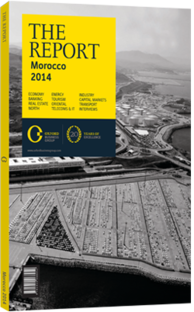Linking up: New rail projects should help to integrate different regions
The biggest story in Morocco’s rail segment is without a doubt the construction of a high-speed link between Tangiers and Rabat, passing by Kenitra and extending to Casablanca on a regular-speed double line. The 200-km-long connection will become the fastest rail link on the continent, topping South Africa’s Gautrain, and reduce rail transport times in Morocco’s north-west significantly; the Tangiers-Casablanca leg will take two hours and 10 minutes, down from nearly five hours at present, while the Tangiers-Rabat link will be more than halved to one hour and 30 minutes, reaching an average speed of 320 km per hour. The connection is the kingdom’s answer to rising passenger and cargo traffic following industrialisation of the north, notably the ports of Tanger-Med and Nador and large industrial investments in the automotive and aeronautics sectors.
MEETING NEEDS: The national railway firm, Office National des Chemins de Fer (ONCF), projects that for the first year of operations in 2016, more than 6m passengers will be transported, as well as growing numbers on existing regular rail connections. The project’s total anticipated cost of Dh20bn (€1.8bn) is being financed by a combination of public funds (Dh5.8bn, €515m), foreign loans (Dh13.36bn, €1.2bn) and donations from foreign partners (Dh840m, €74.6m) such as Saudi Arabia, the UAE and Kuwait.
In April 2013, conventions were signed between ONCF and France’s national railway firm, Société Nationale des Chemins de Fer Français, to collaborate on the line’s maintenance and set up a railway training institute to optimise knowledge transfers.
France has played a central role in the project since its feasibility study started in 2003. Following the €400m order from France’s Alstom for a fleet of 14 double-decker duplex trains in 2010, ONCF awarded a consortium of Colas Rail, part of France’s engineering conglomerate Bouygues, and Egis Rail the contract to design and build the tracks, overhead electrification and facilities in April 2013. The design, supply and commissioning of signalling, train controls, telecommunication systems as well as a traffic control centre in Rabat was awarded to Italian firm Ansaldo STS and Cofely Ineo.
PROGRESS: At the time of writing, the project was 57% complete. Work was under way on installation of seven viaducts and the land preparation of eight other sections. Although the civil engineering works were scheduled for completion by February 2014, the project was seeing some unanticipated delays. To maximise local economic impact, the project was divided up into 11 concessions. While this has allowed for more contractors to be involved, it has also led to timing and capacity issues among some of the parties. “The project proposes a number of technically complex questions at the execution stage, such as land compression, seismic zones and crosswinds,” Mohamed Rabie Khlie, managing director of ONCF, declared at a press briefing in Casablanca in January 2014.
CHALLENGES: The delay is also leading to extra-budgetary costs for equipment providers. One such example is Alstom, which will need to store the rolling stock scheduled for delivery in 2015 while awaiting completion of the tracks. “We are currently in negotiations with ONCF to work out a fair compensation schedule for the delays incurred,” Thierry de Margerie, CEO of Alstom Morocco, told OBG.
Some question the cost of the project, which opponents feel is too high for a country that ran a deficit of 5.4% in 2013. Doubts have been raised about the impact on the country’s sizeable lower- to middle-income segment, who some say would benefit more from an upgrade of the existing network. Nevertheless, ONCF is convinced that the project fills a growing gap in rail transportation. According to the agency, about 34m people will be using the existing train network in 2014, up from 14m 10 years ago. “A high-speed rail link answers the true needs of Moroccan citizens,” Khlie told local media. “The project will bridge regional divides and improve the economy in the north.”
You have reached the limit of premium articles you can view for free.
Choose from the options below to purchase print or digital editions of our Reports. You can also purchase a website subscription giving you unlimited access to all of our Reports online for 12 months.
If you have already purchased this Report or have a website subscription, please login to continue.

